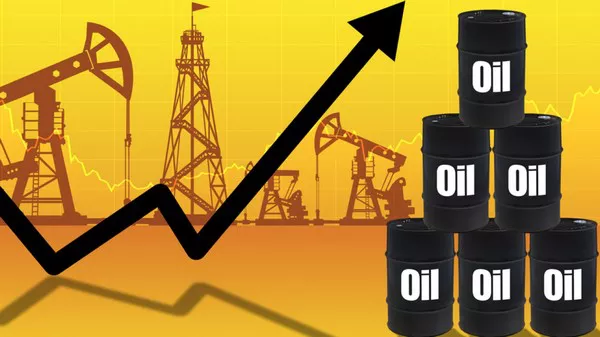Brent crude futures are a vital component of the global oil market, serving as a benchmark for pricing crude oil internationally. Traded on futures exchanges, Brent crude futures allow investors to speculate on or hedge against the future price of Brent crude oil. One common question among traders and investors is whether Brent crude futures are physically delivered. In this comprehensive analysis, we explore the delivery mechanism of Brent crude futures, examining how the process works and its implications for market participants.
Understanding Brent Crude Futures
Brent crude futures are financial instruments that represent agreements to buy or sell a specified quantity of Brent crude oil at a predetermined price on a future date. These contracts are traded on futures exchanges such as the Intercontinental Exchange (ICE) and the Chicago Mercantile Exchange (CME), providing liquidity, price transparency, and risk management tools for participants in the global oil market.
Each Brent crude futures contract has specific contract specifications, including the contract size, tick size, tick value, delivery months, and delivery location. These specifications are standardized by the exchange to ensure uniformity and facilitate trading among market participants. While most Brent crude futures contracts are settled through cash settlement, some contracts may offer physical delivery options.
Physical Delivery Mechanism
Unlike some other commodity futures contracts, Brent crude futures contracts do offer a physical delivery option. However, physical delivery is relatively rare compared to cash settlement, as most traders and investors prefer to close out their positions before the contract expires. Nevertheless, understanding the physical delivery mechanism of Brent crude futures is essential for market participants who choose to engage in delivery-related transactions.
The physical delivery process for Brent crude futures typically involves several steps:
1. Notice of Intent: Market participants who hold long positions in expiring Brent crude futures contracts and wish to take delivery of physical crude oil must submit a notice of intent to the exchange. This notice notifies the exchange of the trader’s intention to take delivery and initiates the delivery process.
2. Matching Process: Once the exchange receives a notice of intent, it matches the buyer (long position holder) with a seller (short position holder) who is willing to deliver the specified quantity of Brent crude oil. The exchange facilitates the matching process to ensure that both parties fulfill their contractual obligations.
3. Delivery Specifications: The exchange provides detailed specifications for the quality and quantity of crude oil eligible for delivery, including grade, API gravity, sulfur content, and delivery location. Sellers must ensure that the crude oil they deliver meets these specifications to fulfill their delivery obligations.
4. Delivery Logistics: Sellers arrange for the physical delivery of Brent crude oil to the designated delivery location specified by the exchange. Delivery logistics may include transportation, storage, and handling of crude oil, as well as compliance with regulatory requirements and exchange rules.
5. Settlement: Upon successful delivery and acceptance of the crude oil by the buyer, the futures contract is settled, and the transaction is completed. Sellers receive payment for the delivered crude oil, while buyers take possession of the oil and assume ownership.
Implications for Market Participants
The option for physical delivery in Brent crude futures contracts has several implications for market participants:
1. Arbitrage Opportunities: Physical delivery options allow traders to exploit price differentials between the futures market and the physical market. Arbitrageurs may buy futures contracts at a discount to the spot price and take delivery of physical crude oil to fulfill their contracts, profiting from the price convergence.
2. Risk Management: For participants with exposure to physical crude oil markets, such as producers, refiners, and end-users, Brent crude futures contracts with physical delivery options provide a valuable risk management tool. These participants can hedge against price fluctuations and manage their exposure to crude oil prices through futures contracts with physical delivery capabilities.
3. Storage and Transportation Costs: Traders who choose to take delivery of physical crude oil must consider additional costs associated with storage, transportation, and handling of the commodity. These costs can impact the profitability of delivery-related transactions and should be factored into trading decisions.
4. Regulatory Compliance: Market participants involved in physical delivery transactions must adhere to regulatory requirements, exchange rules, and quality specifications for the delivered commodity. Non-compliance can result in penalties, fines, or sanctions imposed by regulatory authorities or the exchange.
Conclusion
In conclusion, Brent crude futures contracts do offer a physical delivery option, allowing market participants to take delivery of physical crude oil upon expiration of their contracts. While physical delivery is relatively rare compared to cash settlement, it provides valuable opportunities for traders and investors to manage risk, exploit arbitrage opportunities, and gain exposure to physical commodity markets.
Understanding the physical delivery mechanism of Brent crude futures is essential for market participants who choose to engage in delivery-related transactions. By familiarizing themselves with the delivery process, quality specifications, and regulatory requirements, traders can make informed decisions and effectively manage their exposure to crude oil prices in the dynamic futures market.

